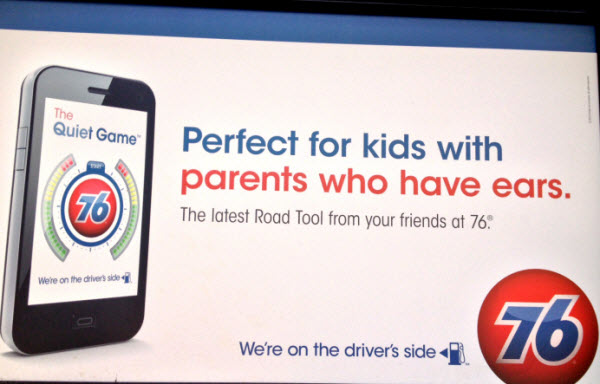One common term used to describe marketing buzz is volume, which quantifies the number of interchanges related to a product or topic in a given time period. Basic ROI measurement of marketing buzz includes higher numbers of visits, views, mentions, followers and subscribers.
The next level of ROI measurement of marketing buzz—such as shares, replies, clicks, re-tweets, comments and wall posts— provide a better indication of the participants’ engagement levels because they require action in response to an initial communication. There is also an increased level of direct public relations engagement with third party influencers, including media, industry analysts and other thought leaders.
How do you know if your company has marketing buzz?
- The company is officially recognized by industry analysts or other third party influencers.
- According to a third party survey of 200 execs, 65% said being a Gartner “Cool Vendor” had a noticeable impact on the company’s revenue growth and the ability to close business faster. (Specifically, 1/3rd of the surveyed companies said they attributed 5-15% of their business growth as the direct result of being selected as a Cool Vendor.) Note: we’re very proud that one of our clients, ShieldX Networks achieved this recognition and was named Gartner “Cool Vendor” for Cloud Security in 2017.
- Companies with marketing buzz outperform in press release distribution results.
- The average number of views for a “start-up’ company (3-5 years old) is around 1,000 – 1500 media views. When your Company reaches 5,000 views and above, something is driving the “buzz” factor.
- In a similar vein, a high click through rate of a company’s press release, media impressions and multimedia views are good ways to measure marketing “buzz.” (Your distribution company can give you performance metrics and ROI measurement).
- Company buzz increases attention from even those that play “hard to get.”
- You’ll have a higher rate of response from reputable publications as well as an increased interaction level with industry players overall.
- Even in a time when “earned” company stories are rare, a company with “buzz” finds its way into the pages of high-end media outlets and has more pick-up in totality with the total number of outlets engaged.
- Industry analysts and other 3rd party thought leaders will be knocking on your door for a request for introduction.
- Web hits and social media
- While it may be hard to establish a baseline on ”marketing buzz” with social media activities, it is possible to measure results against other companies of similar size with social media tools.
- Social media darlings measure their buzz by numbers of followers and LinkedIn interaction which will be superior in follows and interactions when compared to other companies of like size in their space.
While there are many factors that remain elusive when measuring a company’s marketing buzz, industry leaders and veteran marketers are able to track the elements that make up this intangible sensation. They now are utilizing ROI measurement of marketing activities to prove what they already know. Their company has marketing “buzz.”




 #3 Make your content an opportunity for customers and business partners to co-create something great. This summer, I participated in a flash mob with a local dance studio where I take classes. The event created something fun we could all engage around, escalated our brand loyalty to the business and built our sense of community. Leading up to the day of the mob, all the instructors integrated learning the choreography into their classes so that on mob day we became part of a surprise experience at one of the city’s biggest farmer’s markets. How can you create the digital equivalent of a “flash mob” for your business? Who can you get involved? Make sure everyone has skin in the game—figuratively speaking.
#3 Make your content an opportunity for customers and business partners to co-create something great. This summer, I participated in a flash mob with a local dance studio where I take classes. The event created something fun we could all engage around, escalated our brand loyalty to the business and built our sense of community. Leading up to the day of the mob, all the instructors integrated learning the choreography into their classes so that on mob day we became part of a surprise experience at one of the city’s biggest farmer’s markets. How can you create the digital equivalent of a “flash mob” for your business? Who can you get involved? Make sure everyone has skin in the game—figuratively speaking. #5 Your content may be helping your audience make sense of their world. Big brands are turning to publishing and the technology for every company to become a publisher is definitely available. So why not watch what publishers themselves are doing? The New York Times (among many others) are using social sign-on to foster new dimensions of engagement on their web site. I can see the articles my Facebook friends have recently read and from this I learn more about my particular friend’s (name obscured in this visual) enthusiasm for this publisher (plus I’m also encouraged to go read what he or she read—one article closer to the 10 free articles per month pay wall). Facebook social sign-on has led the way in B2C. For B2B, Linkedin can be a great way to gather community around your content. If you don’t have your own online community, Linkedin Groups can be an excellent channel. Brainrider.com has
#5 Your content may be helping your audience make sense of their world. Big brands are turning to publishing and the technology for every company to become a publisher is definitely available. So why not watch what publishers themselves are doing? The New York Times (among many others) are using social sign-on to foster new dimensions of engagement on their web site. I can see the articles my Facebook friends have recently read and from this I learn more about my particular friend’s (name obscured in this visual) enthusiasm for this publisher (plus I’m also encouraged to go read what he or she read—one article closer to the 10 free articles per month pay wall). Facebook social sign-on has led the way in B2C. For B2B, Linkedin can be a great way to gather community around your content. If you don’t have your own online community, Linkedin Groups can be an excellent channel. Brainrider.com has 